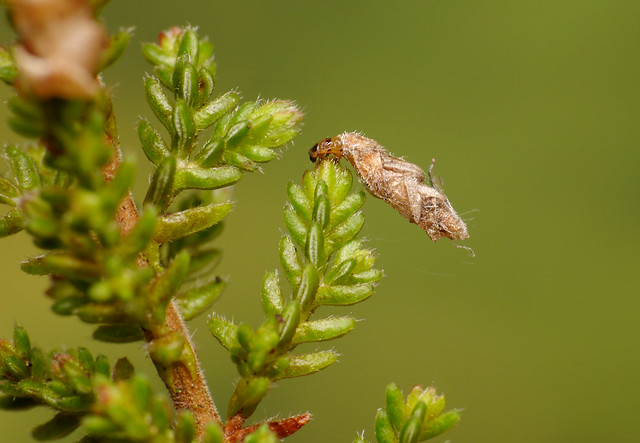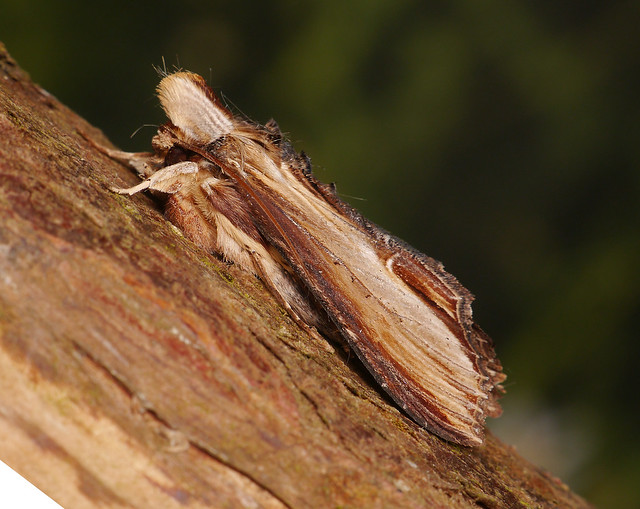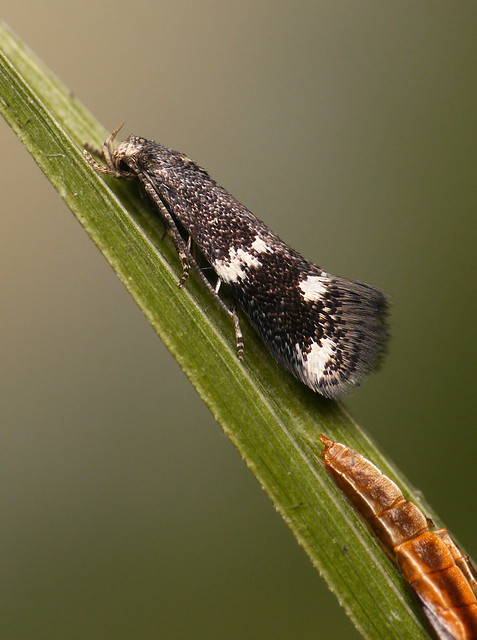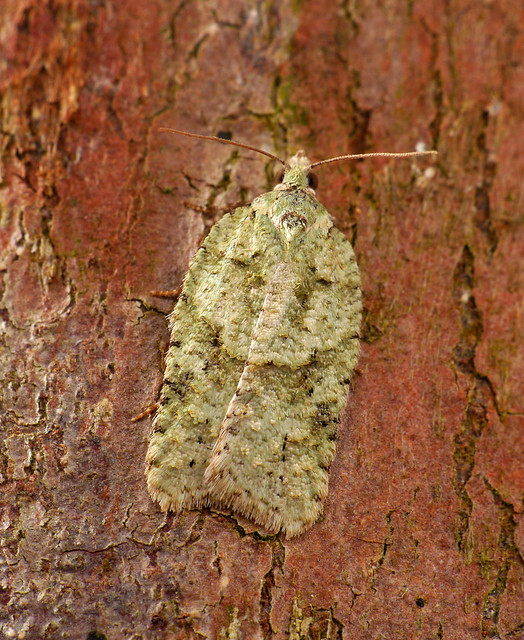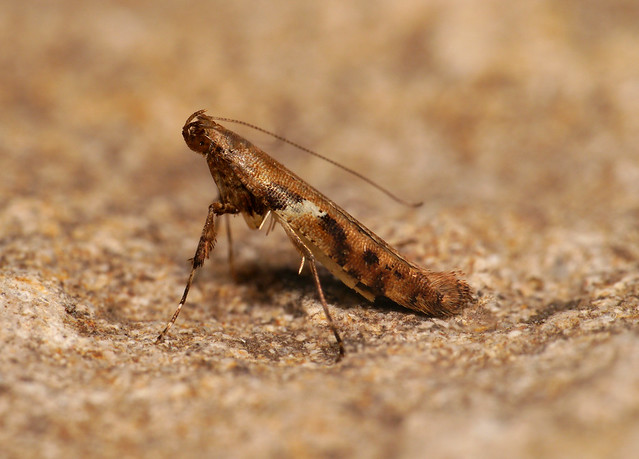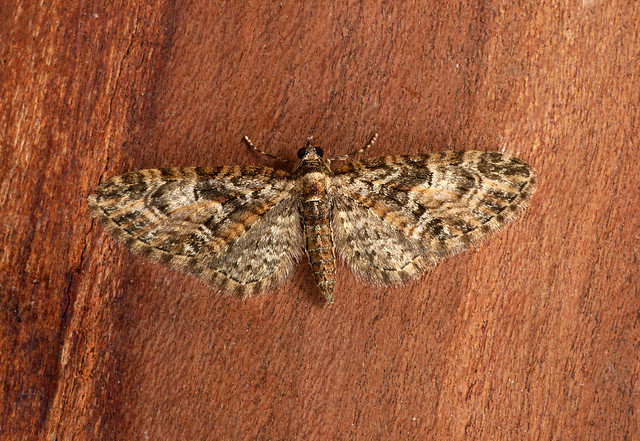As part of Becky Lashley's continuing orchard survey project with the WBRC, Tony Simpson and I joined Becky to look at three sites near Pershore last Tuesday.
One site was a small private orchard which had previously been found to host the Noble Chafer beetle. We could find no sign of the moth.
The second site was really a small arboretum in the grounds of a manor house. Here the bulk of the mistletoe was out of range even with binoculars. No luck here either.
The third site was a very old orchard on the banks of the Avon now owned by the Peoples Trust for Endangered Species. Here we did find one convincing active mine plus two more probably old ones. Enough to convince us that the moth was present at this site.
There was a good quantity of mistletoe at this orchard and we were struck, once again, by how thin on the ground mines appear to be even in good habitat. Even at our most fruitful site last year our best count was maybe a dozen mines from about 150 mistletoe laden trees! Even assuming we are missing a lot, that is still a very low population density.
Also of note was an occupied weevil mine. This confirms that you cannot assume any mine found in Mistletoe belongs to
C.woodiana but we still don't know for sure if this is the same species that bores into mistletoe stems or something different.
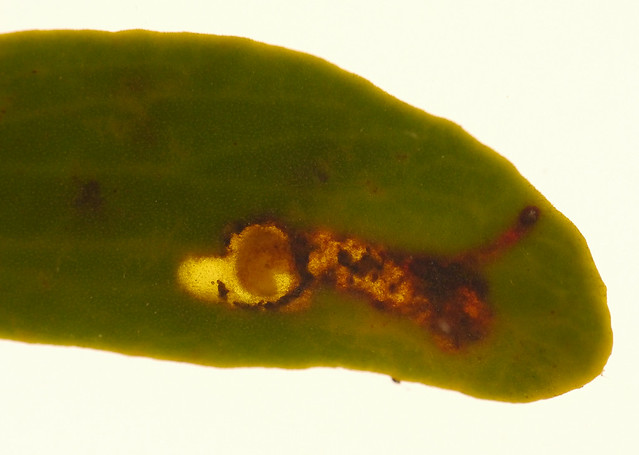 |
| Weevil mine - Rough Hill Orchard 21/04/2015 |
|
If they are occupied they are fairly easy to tell from Woodiana because the larva is sluggish, pale and invariably curled into a C shape. At this stage in the season a genuine
woodiana mine would be considerably larger and more blister like. The larva should be green. Predated mines, especially early in the season are more likely to mislead the unwary.
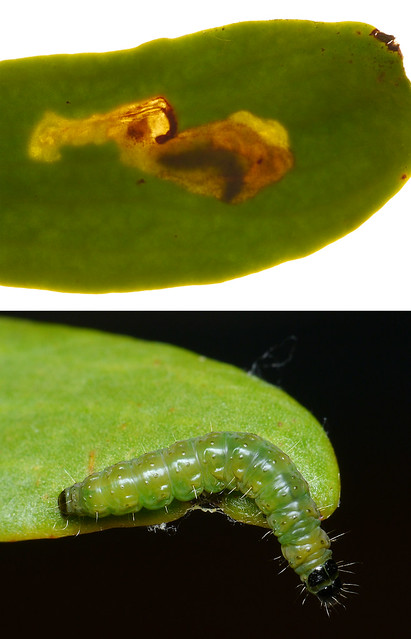 |
| Celypha woodiana - mine and final instar larva - Green Street 2014 |
Oliver Wadsworth




